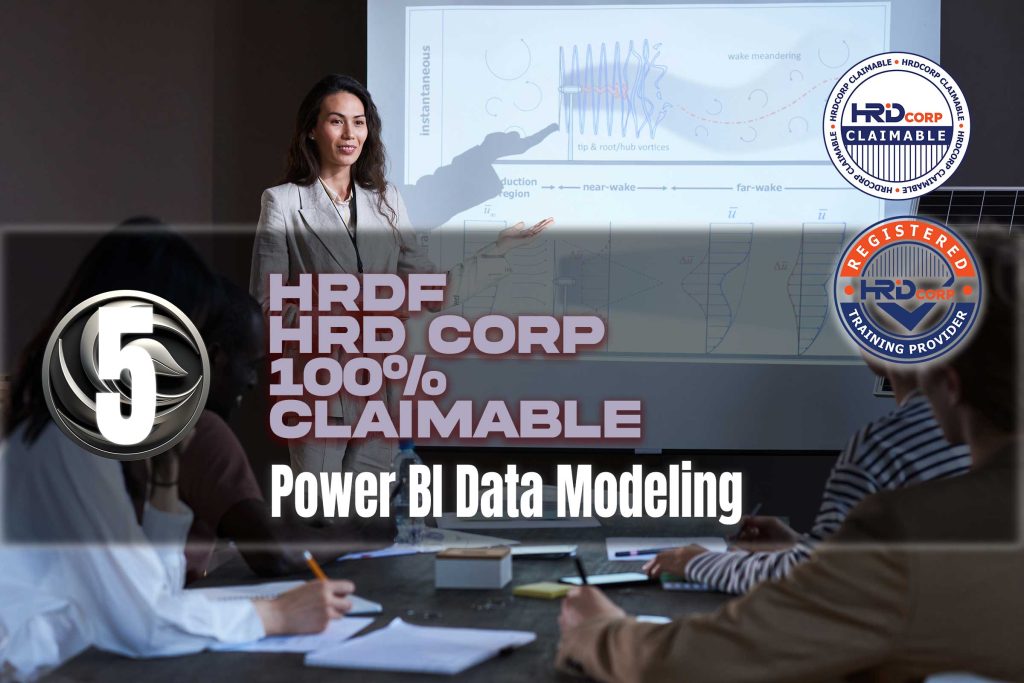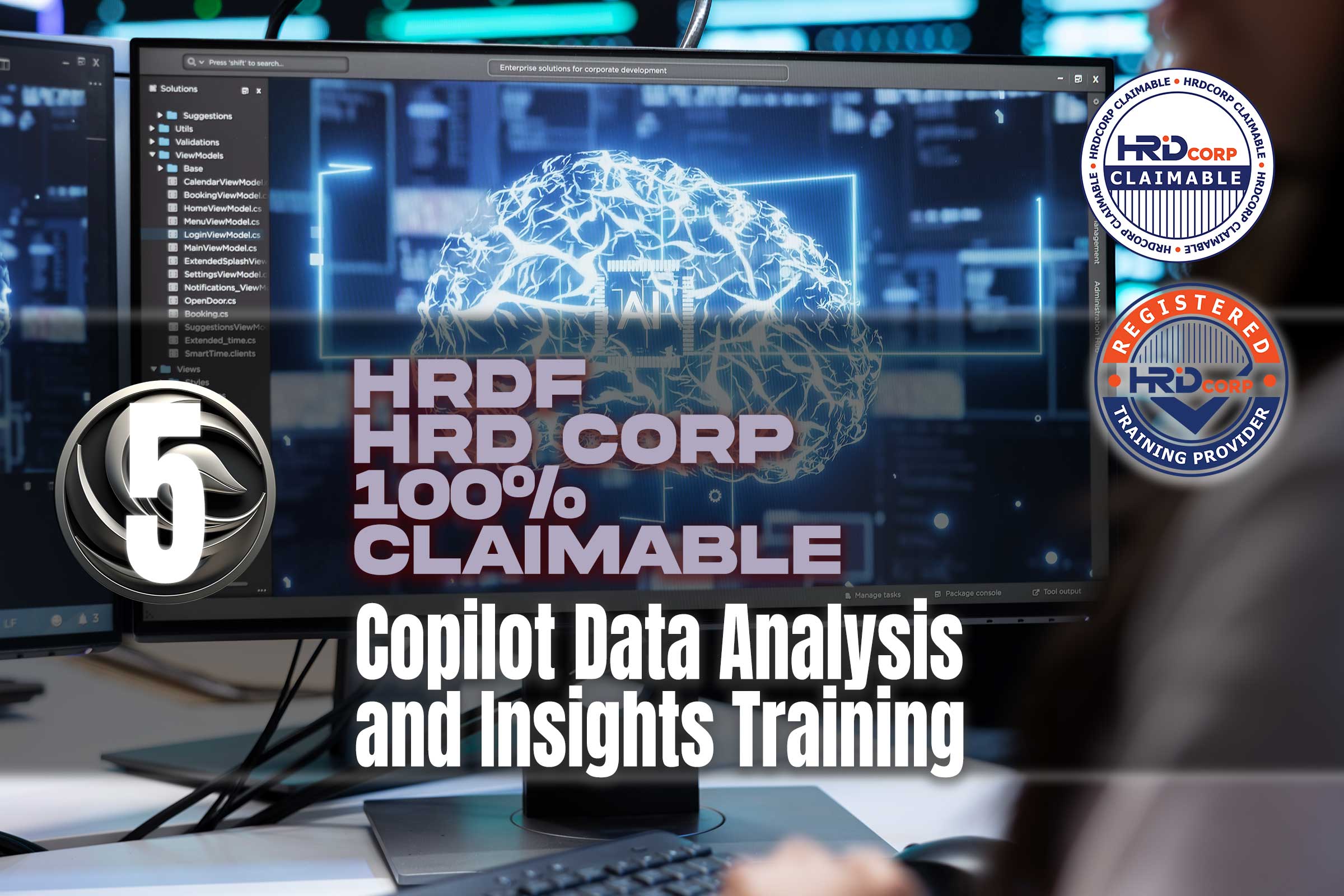Microsoft Power BI Data Modeling Training
Training Methodology:
This Power BI Data Modeling – HRDF | HRD Corp Claimable provides a comprehensive, practical methodology for understanding data modeling in Power BI. The methodology comprises:
- Instructor-led demonstrations: Comprehensive explorations of Power BI data modeling principles and optimal methodologies.
- Participants will construct intricate data models utilizing real-world facts, acquiring practical experience.
- Collaborative learning: Engaging in group conversations and peer-to-peer interactions to address shared data modeling difficulties.
- Case studies: Utilization of data modeling approaches to address actual business challenges.
- Feedback and assessment: Ongoing feedback to enhance participants’ abilities in constructing optimum data models.
Microsoft Power BI Data Modeling Training Course Description
This Power BI Data Modeling course aims to equip users with the necessary abilities to design, construct, and enhance data models in Power BI. The course encompasses the principles of data modeling, advanced methodologies, and optimal practices for developing efficient, scalable models. Upon completion of the course, participants will possess the ability to create data models that facilitate intricate analytical and reporting requirements.
What You'll Learn
- Data Relationships: Comprehending the creation and management of relationships among various data sources in Power BI.
- Data Normalization and Star Schema: Understand data normalization and the construction of star schemas to enhance performance.
- Utilize Data Analysis Expressions (DAX) to construct calculated columns, measurements, and bespoke aggregations.
- Model Optimization: Strategies for minimizing model size and enhancing performance with extensive datasets.
- Data Governance: Implementing optimal data security and governance procedures in Power BI models.
Course Outline
Module 1: Fundamentals of Data Modeling in Power BI
Comprehending data models and their interrelations.
Establishing and overseeing data interrelations among tables.
Overview of one-to-many, many-to-many, and one-to-one relationships.
Module 2: Star Schema Design and Data Normalization
Developing star schema models to enhance performance.
Optimal methodologies for data normalization and denormalization.
Structuring fact and dimension tables for optimal querying efficiency.
Module 3: Advanced DAX Calculations and Measures
Developing computed columns and metrics utilizing DAX.
Constructing sophisticated DAX formulas for tailored aggregations.
Employing DAX to execute intricate business logic within data models.
Module 4: Optimizing Data Models for Performance
Methods for minimizing model size and enhancing query efficiency.
Executing aggregations, partitions, and columnstore indexing.
Optimal methodologies for managing extensive datasets and enhancing refresh rates.
Module 5: Data Security and Governance in Power BI
- Implementing row-level security to limit data access.
- Administering rights and responsibilities inside Power BI models.
- Ensuring data governance and compliance in collaborative environments.
Course Conclusion:
After completing this course, participants will have a comprehensive understanding of how to construct and optimize data models from within Power BI. Data analysts, business intelligence professionals, and IT managers who are eager to improve their data modeling skills will find this course to be a great choice because it will enable them to develop models that are both efficient and scalable, and that can support complicated reporting and analytical requirements.
Duration
Time commitment
Language
Recap video transcript
Difficulty
Plaform
Contact Now : Microsoft Training HRDF | HRD Corp Claimable
How To Apply HRDF | HRD Corp 100% Claimable Grant
Read the whole process to apply HRD Corp Grant
Get the whole idea how much you can claim
Use this scheme to get 100% claimable
How to appeal your grant
How to withdraw your grant
Modify your grant
How to answer the query
















